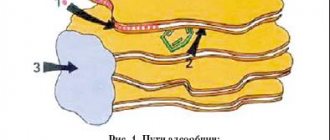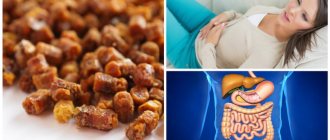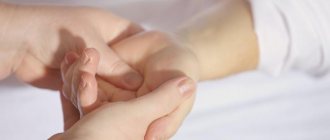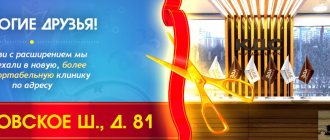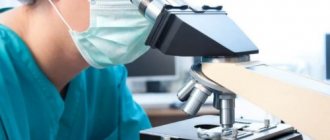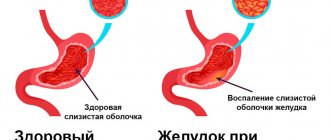Massage is a familiar set of techniques for influencing the surface of the body, and through it, the internal organs of a person. The impact options can be very different: from barely perceptible stroking to vigorous rubbing and spanking. Massage can be performed manually or using special hardware techniques (vacuum, vibration, ultrasound, etc.).
The history of this method of healing goes back thousands of years. It is present in the medical practices of different peoples and over a long period of existence has repeatedly proven its effectiveness. With the help of massage, they treat a lot of ailments, restore joint mobility, fight obesity, normalize metabolism, etc.
Therapeutic massage can act as an independent or auxiliary means of therapy. In the skillful hands of an experienced massage therapist with medical education, he works wonders. For this reason, therapeutic massage is used in a variety of rehabilitation practices.
The effect of massage on the body
The nature of the effect of massage on the body is determined by the mechanisms of its action. The latter are divided into 3 types:
- Humoral . Skin receptors actively react to massage manipulations, as a result of which the body releases bioactive substances (acetylcholine, histamine, etc.). They are distributed through the bloodstream throughout all systems and contribute to the overall health of the patient.
- Nervous reflex . By performing certain actions, the massage therapist transfers his energy to the patient’s muscles, joints and skin. In the receptors of the latter, this energy is converted into a nerve impulse. It reaches the central nervous system, which begins to adjust the functioning of all other body systems.
- Mechanical . Direct impact on a specific area leads to increased blood circulation and lymph outflow. This mechanism has an excellent effect on the functioning of the heart and blood vessels, eliminates congestion in tissues, improves skin respiration and metabolism in general.
The first human organ that is positively affected by massage is the skin. The friction of the massage therapist's hands on the surface of the back, hips and other parts of the body causes a rush of blood to the surface of the epidermis and removes dead cells. Renewed skin absorbs oxygen better. The cells of the deep layer - the dermis - function more actively.
Massage strengthens the skin, stabilizes the sebaceous glands, as well as metabolism in superficial and deep tissues. The skin becomes elastic and toned. With more vigorous exposure, the tone of muscles and ligaments increases. Activation of blood circulation has a positive effect on the condition of all parts of the body.
How to give a belly massage to adults at home
Even when performing a massage at home, it should only be performed by a professional!
During abdominal massage, various techniques are used, which include:
- deep thrusts;
- stroking;
- skin rolling;
- squeezing and twisting;
- kneading.
A common technique for abdominal massage is deep stroking, which is performed with pressed hands and fingers. They are used to penetrate muscle tissue and apply intense pressure. Deep thrusts and strokes help relieve pain by reducing muscle tension and increasing tissue elasticity. Tight muscles relax, reducing restriction that can cause pain during movement. Muscle tissue also relaxes and stretches, increasing elasticity and flexibility. Reducing muscle tension and increasing tissue elasticity through abdominal massage allows a person to have an increased range of motion without pain.
Massage
KP guide on types and techniques of massage, their indications and contraindications
Also during abdominal massage, skin rolling is used: it is grabbed and rolled between the fingers and toes. Skin rolling is an effective way to relieve muscle and fascial tension. Fascia is located under the skin and is a thin layer of connective tissue that can create restrictions when pulled. Rolling the skin raises the temperature of the muscles and fascia, helping them to stretch and relax, relieving tightness and restriction. Due to this, rolling the skin also helps reduce muscle pain.
Squeezing is a common technique used during abdominal massage. Squeezing involves grabbing the muscle tissue on each side of the abdomen and pulling it in opposite directions toward the center. The pressure during the twisting process is adjustable from light to strong. Squeezing helps relax and stretch the abdominal muscles, relieving tension, spasm and stress in the muscles.
Another abdominal massage technique is kneading, where the soft muscle tissue is slowly stretched and compressed. Kneading helps improve blood and lymph flow and loosen tissue. Blood and lymph flow increase as muscle temperature rises due to the stretching and compressing actions of the soft tissues. Improving blood and lymph flow helps increase cellular turnover in tissues as the amount of oxygen and nutrients that must be delivered to the muscles is increased and exchanged for metabolic waste. Increased cellular turnover results in reduced muscle fatigue and helps maintain stronger, healthier muscles. Connective tissues also loosen as muscle temperature rises. Moving your arms helps them stretch and increase elasticity, resulting in less spasm, increased range of motion, and less pain.
Types of massage
According to the tasks that need to be solved, massage is divided into:
- hygienic;
- cosmetic;
- sports;
- medicinal.
Hygienic is carried out to prevent congestion and various diseases. It improves health and uses the body's hidden reserves. Cosmetic massage is used to tone the skin, combat wrinkles, stretch marks, and early baldness. Alternating pressure on problem areas of the body also helps get rid of cellulite.
Sports massage is a way to prepare an athlete’s body for significant stress and eliminate the consequences of injuries and sprains. Therapeutic massage is used in the treatment of certain diseases. It also helps to recover from injuries and surgeries.
Indications
Cosmetic massage is performed to reduce fat deposits. If you have problems with the elasticity of the skin on your abdomen, uneven skin, stretch marks, cellulite, contact a professional massage therapist. After childbirth, you can also massage the abdomen to restore it to its previous appearance, prevent skin sagging, speed up its contraction, and enhance collagen production. However, the procedure can be carried out only after the end of postpartum bleeding, complete healing of the sutures and contraction of the uterus. Before going to the salon, consult your doctor.
Therapeutic abdominal massage is prescribed in the following cases:
- Constipation due to slow intestinal motility;
- Flatulence;
- Colitis;
- Problems with the reproductive system;
- Biliary dyskinesia (bile stagnation);
- Fat deposits in the abdominal area that are difficult to remove with diet.
Massotherapy
It is usually used in medical and recreational institutions (health resorts, etc.). Therapeutic massage is combined with drug therapy and is used to treat diseases of the nervous, genitourinary and other systems. Therapeutic rehabilitation massage is a way to restore the functionality of the body after injuries and surgical interventions.
All these types of effects eliminate swelling, pain and at the same time optimize the body’s regenerative resources. Massage after injury is often combined with cold or heat. Sometimes they alternate.
Manipulations using ice relieve swelling and improve joint mobility. In addition, they act as a natural pain reliever, dulling the sensitivity of receptors. For colds, massage with warming ointments is performed.
Types of medical massage:
- Spot . Another name for this type of massage is “acupressure”. Manipulations are aimed at specific points. They are called bioactive or reflexogenic. The massage therapist works on these areas with his fingers or elbows. When pressing on a reflexogenic point, certain centers are activated, relieving pain and tension.
- European classic . Performed by hand or auxiliary hardware. Massage movements are stroking and rubbing in nature. Targeting: the injured part of the body and its surrounding areas.
- Periosteal . It is used for diseases of the musculoskeletal system, which are often associated with diseases of the internal organs. Massage helps relieve pain and improve blood and lymph flow.
- Connective tissue . It is used in case of problems with internal organs and the musculoskeletal system. The effect is aimed at connective tissue in certain areas.
- Reflex . The massage technique is based on the idea that the body is a single system, all components of which are closely intertwined and interact with each other. By acting on the skin, you can influence the condition of the nerves, spinal cord and other areas.
- Hardware . It is carried out using special devices that affect the body with infrared radiation, ultrasound, weak electric currents, etc.
Benefits of abdominal massage for adults
Abdominal massage has significant health benefits, and not all of the positive effects are limited to the abdominal area. Not only can massage relieve short-term ailments such as constipation, bloating, and irritable bowel syndrome, but it can also be a valuable means of relieving pain due to abdominal adhesions (after surgery, injury) and digestive problems that are related to stress or medications .
Abdominal massage can be performed in combination with a full body massage or as a special procedure to relieve abdominal organs and tissues. When performed regularly, abdominal massage can be a lifelong feeling factor. It improves digestion, which often suffers due to significant stress or tension. A professional abdominal massage not only stimulates the digestive system, but can also help the colon move waste through the intestines, which can help relieve constipation, bloating and gas.
The internal organs, including the liver, all parts of the colon, diaphragm, small intestine and gallbladder, are located in the abdominal region of the human body. Abdominal massage also stimulates them, including the gallbladder and liver. Increasing blood flow and oxygen can help improve organ function. When it comes to the gallbladder and liver, improved function means more efficient release and removal of waste products.
Back massage
KP instructions for back massage: who can and cannot do it
Improved circulation benefits the blood vessels throughout the abdominal cavity.
Abdominal massage can stimulate bowel movements that may become irregular or infrequent due to stress, dietary issues, medications, or other health problems. The intestinal muscles require some form of stimulation to maintain peristalsis (successive waves of involuntary contractions that force the contents to move on). If peristalsis does not occur, bowel movements become sluggish or almost stop.
Abdominal massage reduces muscle tension when the temperature rises due to friction between the fingers and the skin. Increasing muscle temperature relaxes the muscles and allows them to stretch and move more freely without restriction as tissue elasticity increases. Loosening tight muscles reduces pain caused by the restriction.
During an abdominal massage, friction is created between the skin and fingers, and blood flow increases. Increased blood circulation provides muscles with more oxygen, nutrients and white blood cells needed to repair damage. Increasing oxygen and nutrients also reduces muscle fatigue. Reducing fatigue by improving circulation can help reduce pain resulting from injury.
Abdominal massage can help before intense exercise or competition. It helps prepare a person for mental and physical activity by reducing muscle tension. Before training or competition, muscles are more tense. Tight muscles can limit your range of motion and flexibility. Abdominal massage helps relax and relieve muscle tension, while increasing range of motion and flexibility. Increasing range of motion and flexibility helps reduce the likelihood of injury. After exercise, abdominal massage relaxes the body both physically and mentally.
Abdominal massage helps the body relax psychologically by increasing levels of relaxation hormones called dopamine and serotonin. Dopamine and serotonin are released by the brain and can give a person a sense of well-being as well as improve relaxation. Levels of the stress hormone cortisol decrease. In addition to increasing stress levels, cortisol can give a person a "bad mood" effect and can also increase depression levels. Increasing serotonin and dopamine levels and decreasing cortisol allows the body to relax psychologically.
Nose massage
For what diseases would a nasal massage be useful and how to do it?
Increased flexibility is another benefit achieved through abdominal massage. When muscles become tight and tissues become restricted due to lack of elasticity, flexibility decreases. Abdominal massage is aimed at increasing flexibility by relieving muscle tension and increasing tissue elasticity.
Abdominal massage can improve your posture. The muscles in the abdominal area may become tight and restrict movement. Muscle tightness can cause changes in posture due to constant muscle contraction. Poor posture can worsen muscle tension, leading to increased pain. Abdominal massage is aimed at improving posture by reducing muscle tension.
What other problems can be solved:
- Stress Reduction – Abdominal massage can reduce the feeling of a knot in the stomach, provide peace of mind and relief from stress, anxiety and depression, creating a state of relaxation;
- reduction of scar tissue – fascial work and special massage techniques help to destroy adhesions and scar tissue after surgery;
- Reducing lower back pain – applying pressure to the abdomen can relieve deep muscle spasms and reduce pressure on the front of the spine;
- more efficient breathing - the action around the chest combined with deep abdominal breathing can relax the muscles around the diaphragm - this allows air to flow efficiently throughout the body and creates balanced and full breathing;
- Improvement of menstrual symptoms – Massage can help reduce painful menstrual cramps in women by easing cramping and muscle stiffness.
Rules of application
Before deciding on a course of therapeutic massage, you should definitely consult with your doctor. You cannot “prescribe” such treatment for yourself. If used incorrectly, even massage can cause significant harm to the body.
The second rule concerns the duration of treatment. One massage session, even from the most highly qualified specialist, cannot bring the expected benefits. Illnesses and pain cannot disappear instantly. For this reason, real therapeutic massage is always prescribed in courses (10-15 procedures).
The number and frequency of sessions is determined by the doctor. It is imperative to follow his recommendations. In some cases, daily massage is required, in others - with breaks of 2-3 days. If the problem is severe enough, treatment may take several weeks.
Consultation with a doctor is also necessary because each patient requires an individual approach. There is no general treatment plan for everyone. When prescribing a course of therapeutic massage, the doctor takes into account the age, health status and specific disease of the patient.
Popular questions and answers
A professional massage therapist with 14 years of experience, Alexander Kholmogorov, answered our questions about abdominal massage
How effective is abdominal massage for adults?
Abdominal massage, performed by an experienced specialist who knows anatomy, improves intestinal motility (movements are performed clockwise), improves blood flow to the abdominal organs (recovery processes are included). Abdominal massage effectively removes fat deposits, smoothes cellulite and tightens the skin.
How often should adults have a belly massage?
The frequency of massage is determined by the course and purpose. If this is a classic massage, then every other day you can include it in a general massage. If this is an anti-cellulite massage, then you can do it every day - the course stretches to 15 - 20 sessions.
Indications for therapeutic massage
The type and number of therapeutic massage sessions is prescribed only by a doctor. Interestingly, this type of therapy is extremely effective for a wide variety of ailments. Indications for its use are numerous:
- coronary disease;
- stomach ulcer;
- gastritis;
- intestinal motility disorders;
- bone fractures (at the rehabilitation stage);
- sprains;
- muscle tears;
- cerebral palsy;
- osteochondrosis;
- atherosclerosis;
- low/high blood pressure;
- heart disease;
- neuralgia at different stages;
- diseases of the genital organs;
- bronchitis;
- asthma;
- salt deposits;
- diabetes;
- scoliosis and other posture disorders;
- flat feet;
- obesity, etc.
It’s impossible to list all the diseases for which massage really helps. It is used in ophthalmology, surgery (during the recovery period), gynecology and other fields. Various massage techniques are widely used for the rehabilitation of injured patients and those experiencing functional disorders.
Contraindications for abdominal massage for adults
Abdominal massage should be avoided or used with extreme caution in persons:
- having stones in the gall bladder and kidneys;
- calcium deposits in the bladder;
- with the presence of a hernia of the navel, anterior abdominal wall, groin;
- having stomach ulcers or internal bleeding;
- certain gastrointestinal diseases or conditions such as Crohn's disease, celiac disease, or ulcerative colitis;
- after abdominal surgery (you need to wait a certain time);
- during pregnancy.
How to prepare for a session
To get the maximum healing effect from a massage, you must:
- eat no later than an hour before the session;
- take a shower (skin should be clean);
- remove jewelry from the hands and neck that may interfere with the procedure;
- relax as much as possible during the manipulation so that the doctor’s hands do not encounter muscle resistance;
- Lie quietly after the massage for 15 minutes.
If manipulations are performed on the abdominal area, the last meal should occur no later than 3 hours before the session. You should also check for open wounds or burns on the skin. They can make an initially pleasant massage extremely painful. Unpleasant sensations will not allow you to relax.
Experts do not recommend epilation of legs and other areas immediately before the procedure. Rubbing epilated skin is a dubious pleasure. In addition, inflammation may occur due to massage oil getting into micro-wounds and cuts.
What is visceral massage and what does it give?
Visceral massage has been used to treat abdominal diseases since ancient times. Healers believe that any inflammation is accompanied by vasospasm and paresis of organ tissue, which leads to poor circulation and lack of oxygen. Toxic substances are less readily excreted and accumulate in the affected tissues. Massage allows you to normalize blood and lymph flow, improve your general condition and speed up recovery from inflammatory diseases.
The benefits of visceral massage are as follows:
- Painful sensations associated with ulcerative pathologies of internal organs disappear ;
- The process of tissue regeneration is enhanced;
- The muscle tissue of the stomach , intestines and other organs becomes more elastic, which improves their peristalsis;
- Flatulence and constipation disappear
- The skin is strengthened and fat in the problem area is burned faster;
- Cellulite disappears;
- Increases overall immunity;
- Excess fluid is removed , swelling disappears;
- The severity of headaches is reduced
Visceral therapy also allows you to get rid of emotional overeating due to stress. Patients' mood and metabolism improve, and it is easier for them to control their hunger.
Some experts believe that the condition of internal organs can affect overall well-being. For example, a diseased spleen can lead to depression, and liver disease can lead to insomnia.
It is worth remembering that the effectiveness of any procedure depends not only on an experienced specialist, but also on the patient himself. You need to follow the rules, do not eat 3-4 hours before the massage, and also drink as much water as possible. Proper drinking regimen helps eliminate toxins, normalize metabolism and hormonal levels, and improves intestinal function. If you want not only to restore the functioning of your internal organs, but also to lose weight, do not forget about physical activity and proper nutrition.
Contraindications for therapeutic massage
No matter what magical properties therapeutic massage has, even it has contraindications. These include:
- the patient is feeling unwell;
- heat;
- acute respiratory infections;
- dermatological diseases (suppuration of the skin, fungal infections, etc.);
- incoagulability and other blood diseases;
- aneurysm;
- ischemic disease;
- tendency to bleed;
- thrombosis;
- varicose veins;
- cerebral vascular sclerosis;
- acute inflammatory processes of the lymphatic or circulatory system;
- atherosclerosis of peripheral vessels;
- allergies with skin reaction;
- tumors of any nature;
- chronic osteomyelitis;
- hypertensive crisis;
- Gastrointestinal disorders (diarrhea, vomiting);
- anemia;
- mental illness;
- syphilis in the active phase;
- tuberculosis and other highly infectious diseases.
Anyone who wants to improve their health with the help of therapeutic massage must not only take into account all the information presented in the article. It is important to find “your” specialist. The massage therapist must be highly qualified and have a medical education. You can even ask if there is any documentary evidence of this.
For many patients, it is also important that the specialist inspires confidence and is relatable. If something repels a person and causes a feeling of constraint, a massage is unlikely to be beneficial.
A set of exercises for children from 10-15 days of life to 3 months of age:
- Stroking hands (4-6 times)
- Stroking legs (4-6 times)
- Laying on the stomach
- Back massage (4-6 times)
- Abdominal massage (6-8 times)
- Reflex crawling
- Massage and reflex exercises for the feet. (3-4 times).
As the child grows, new elements are added to the daily set of exercises, and the time of the procedure increases. Your pediatrician and nurse masseuse will tell you more about massage and gymnastics techniques.
Improper, uncertain execution of techniques can cause discomfort in the child and cause harm instead of benefit. Therefore, before you start giving massage and gymnastics to your baby yourself, consult a specialist.
Author of the material: pediatrician at the clinic on Rodionovskaya Kolinichenko T.V.
The massage session is over, there is pain - is this normal?
Back pain is a symptom that massage can help with. But what if after the session the pain remains and even intensifies? How should a patient react to such changes? Should I continue to visit the massage therapist or stop the procedures? There are several situations why pain occurs after a relaxing massage. Let's look at the most common ones.
Active and passive lifestyle
Is playing sports something out of a fantasy world for you? Do you move little and prefer a sedentary lifestyle? It is not surprising that after the massage there was pain. It's the muscles that hurt. They haven't felt the strain for a long time. The masseur warmed up the whole procedure, pulled, influenced them - in a word, strained them. Although the tension should subside during the session. But here it's the other way around.
High activity can also play a cruel joke on you. Are you a professional athlete? Are you engaged in heavy physical labor? To eliminate the consequences of overwork, the massage therapist presses on the muscles with greater force than usual. If the pressure is not increased, the muscle fibers will not be able to stretch and relax. They will remain clogged.
Beyond the pain threshold
Everyone's pain threshold is different. It's no wonder that some people walk on nails and broken glass and feel nothing, while others faint from a simple vaccination. The massage therapist does not know at what point you will feel pain. The same pressure can be felt differently even by the same person. The skin has different thickness and sensitivity. Where it is thin, intense massage will be painful and unpleasant. When affecting other areas and zones, these same movements will be too weak.
Your feelings are very important when working as a massage therapist. When they are painful, don’t be patient, say so. When you don’t feel anything, too. If this is not done, you will feel discomfort not only during the session, but also after it. The good thing is that the pain only lasts 24-72 hours.
Relax
Tension and spasms in a certain muscle group are normal. In this situation, the fibers are stiffer than usual. The body, in an attempt to help the problematic muscle group, distributes the load to nearby muscles. The system is broken. It is twice as difficult for a massage therapist to relieve tension. Microtraumas are possible, the healing of which does not occur without pain.
The degree of muscle tension varies. When you massage, you can further strain an already tense muscle group because you are expecting and afraid of pain. It is not surprising that muscle fibers will tire more than others. Massage is analogous to a workout, after which pain occurs. To prevent this, relax as much as possible and forget about all your problems. This makes it easier for both the massage therapist and you - the effectiveness of treatment increases significantly.
How to eliminate pain after a massage?
We figured out the cause of the pain. If it appears, how can it be eliminated or at least weakened? Here are some effective tips:
- Drink plenty of fluids. Muscles saturated with water become more flexible. The liquid removes toxins that are released during the massage. To avoid pain, drink plenty of water both before and after the session;
- Light stretching. The masseur warmed up your muscles. Your task is to stretch them. Pay attention to those areas that have been massaged more than others;
- Warm bath. Sea salt is cheap and has anti-inflammatory and detoxifying effects. Want to relax even more? Add lavender oil to the water. A couple of drops will calm you down, relieve pain, and stop inflammation.
Conclusion
It is normal for you to feel pain after a massage.
It occurs in the muscles. In a similar way, the body reacts to stretching and active impact on the fibers. Soon the pain will disappear and your health will improve. The body adapts to constant massage sessions. Painful sensations will become a rare occurrence, and then completely disappear. Author: K.M.N., Academician of the Russian Academy of Medical Sciences M.A. Bobyr
Technique for performing endermolift
The impact during the procedure is performed using a manipulator, which is used for cosmetic procedures on the skin of the body and face. The skin fold is captured by parallel rollers using pulsating vacuum. Mechanical vibrations arising from such an effect on the skin and subcutaneous fat affect several planes simultaneously: horizontal, vertical and the one along which the handpiece moves.
During the procedure, the patient is placed on a couch face up or down (depending on the area of the body that will be treated during the procedure). Throughout the session, you can turn, talk and strain your muscles, this will not affect the effectiveness of the endermolift. Visible changes after LPG massage were noted in the hips, back, abdomen, sides, shoulders, décolleté, neck and face.
Cellu M6 Integral is one of the innovative professional-level devices that is used in medical applications. The procedure is carried out in an endodermological suit, which prevents excessive stretching of the skin and ensures sufficient hygiene of the massage, allowing it to be performed on various areas of the skin covered with hairs or subject to sweating.
